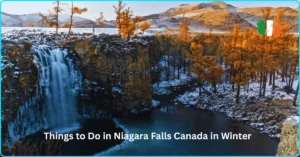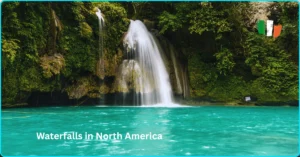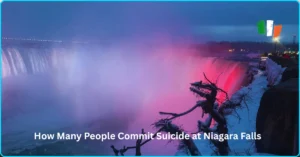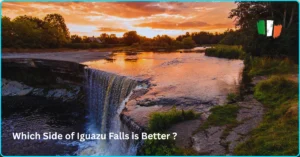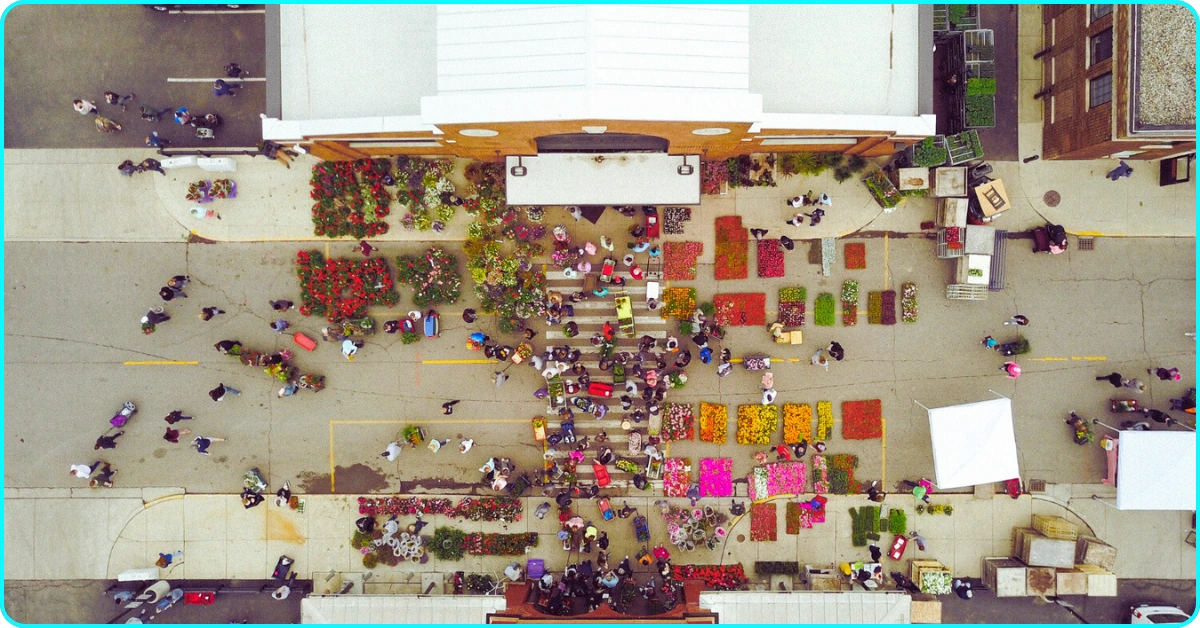There’s something magical about standing near a waterfall the thunderous roar, the mist on your skin, and the sight of water endlessly tumbling down rock. I still remember my first visit to Powerscourt Waterfall in Ireland; I stood in awe, wondering where does the water from waterfalls come from? It felt like the mountain itself was alive, breathing water into the world. I couldn’t get rid of the curiosity that was ignited by that moment.
Waterfalls seem endless, but have you ever stopped to wonder how do waterfalls not run out of water? Or where does the water from mountain waterfalls come from? In this article, we’ll dive into the beauty and mystery of waterfalls, explore how they work, and answer some of the most common questions about them. Ready to chase some waterfalls with me? Let’s go.
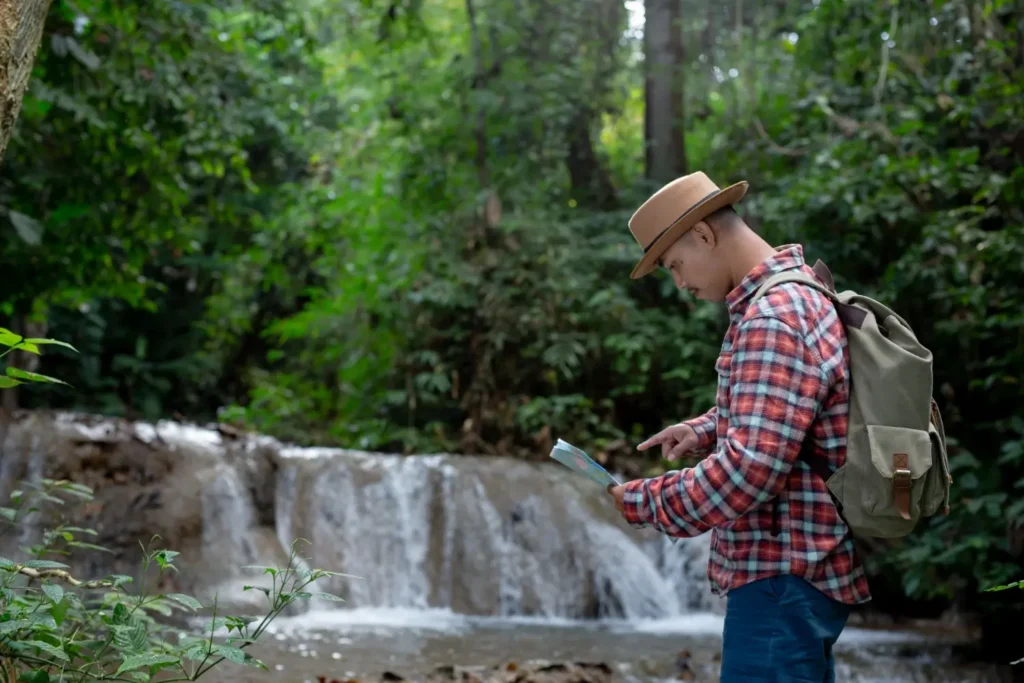
The Source of Water in Waterfalls
So, where does the water from waterfalls come from? You’ve probably stood in front of a waterfall at some point maybe soaking in the spray or listening to that endless crash and wondered, “How does it never stop?” Honestly, I asked myself the same thing at Torc Waterfall in Killarney, Ireland. It was after a summer rain, and the falls were roaring louder than usual. It felt like the hills had opened a tap somewhere up high. But here’s the short answer: the water in waterfalls comes from nature’s most reliable sources rainfall, melting snow, underground springs, and flowing rivers.
Rain is one of the biggest contributors. When it pours on mountain slopes or forested hills, that water has to go somewhere and fast. It trickles into streams, joins rivers, and when the terrain drops suddenly? Boom waterfall. In colder places, snowmelt takes over. Ever been hiking in spring and seen water gushing where it was dry months before? That’s melting snow feeding the streams and rivers.
Another surprising source is underground. Many waterfalls are fed by natural springs and mountain aquifers kind of like hidden reservoirs under the earth. These springs push water up through cracks in rocks, and gravity does the rest. It’s nature’s plumbing system in action.
Rivers and streams also play a huge role. Most waterfalls are part of a river’s path a sudden drop in the land sends the water plunging over a ledge. It might look like magic, but it’s really just physics, rainfall, and the shape of the land working together.
Where Does the Water from Mountain Waterfalls Come From?
Mountain waterfalls have their own rhythm. Most of their water comes from snowmelt and glaciers. Higher up, where temperatures drop and snow sticks around, that snow slowly melts as the weather warms. I remember seeing this firsthand in the Wicklow Mountains small streams bursting to life in spring, fed by nothing but melting snow and frost.
In colder places like parts of Venezuela or Iceland, glaciers step in. Angel Falls, for example, is fed by rainfall and mist high up in the mountains, but surrounding areas also get support from glacial runoff. It’s wild how something so cold can give birth to something that flows so powerfully.
Where Does the Water from Mountains Come From?
Let’s zoom out a bit where does all that mountain water start? It’s the water cycle doing its thing. Rain and snow fall thanks to precipitation. Some of that water soaks into the ground (infiltration), but most of it runs off downhill. That’s why you get streams cutting through valleys and rivers carving their way through rock.
The terrain matters, too. Steep slopes push water faster, while flatter areas slow it down. Elevation helps gravity keep everything moving. That’s why even small mountains can produce pretty epic waterfalls. Where and how the water flows is determined by the land’s shape.
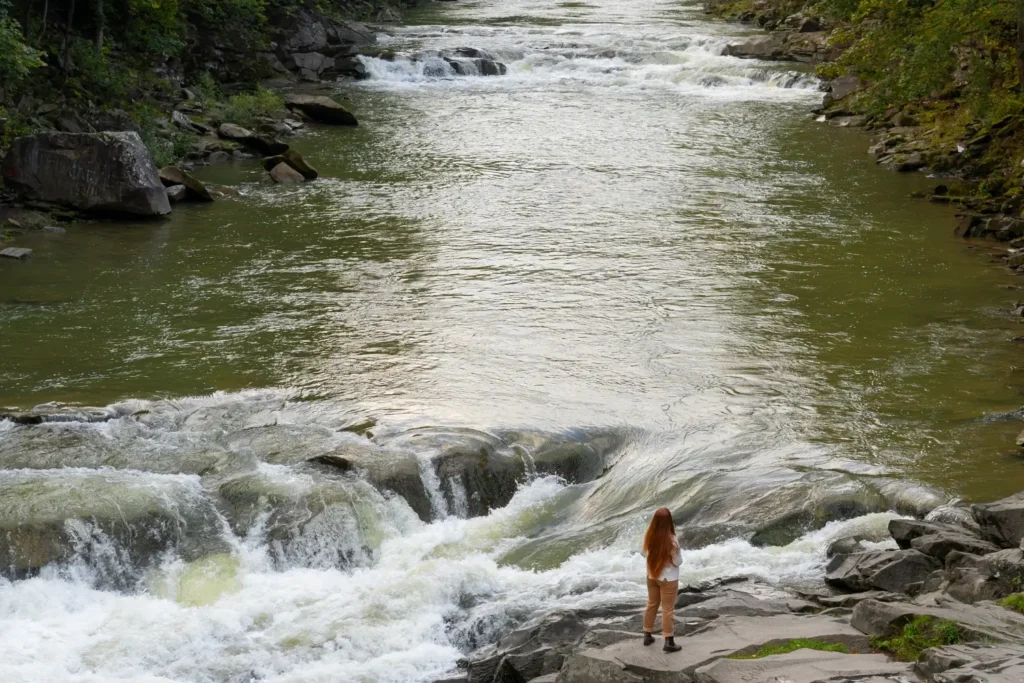
How Do Waterfalls Not Run Out of Water?
Waterfalls don’t run out of water because they’re part of nature’s never-ending water cycle. Rain falls, rivers flow, snow melts, and everything keeps moving like a giant, beautiful loop. I remember standing at Glencar Waterfall after a few dry days in Ireland. It still flowed, just softer, like it was catching its breath. That moment made me realize how deeply connected waterfalls are to the rhythms of nature.
The secret lies in balance. Rain and snow are like regular deposits into nature’s bank account. Even when you don’t see rain for days, water is stored in rivers, lakes, underground springs, and mountain snowpacks. Slowly, all of it goes downhill. It’s not magic it’s Earth doing what it’s done for millions of years.
Climate plays a big role, too. In rainy regions like western Ireland or the Pacific Northwest, waterfalls tend to flow all year. Consistent rainfall keeps streams and rivers alive. But in drier places or during droughts some waterfalls do dry up, especially the seasonal ones. I once hiked to a “hidden” waterfall in California in late summer. The only thing waiting for us was a dry cliff and some confused birds.
But here’s the cool part: most waterfalls are fed by river systems, and rivers are renewable. As long as the climate stays stable and the land isn’t overused, rivers refill from rain and snow. That means waterfalls don’t just vanish they pulse with the seasons.
Some falls shrink in summer and roar in spring. Others, like Niagara Falls, have such a powerful and constant water source (the Great Lakes!) that they seem to never change. And while some may freeze in winter or slow down in a dry spell, they usually bounce back with the weather.
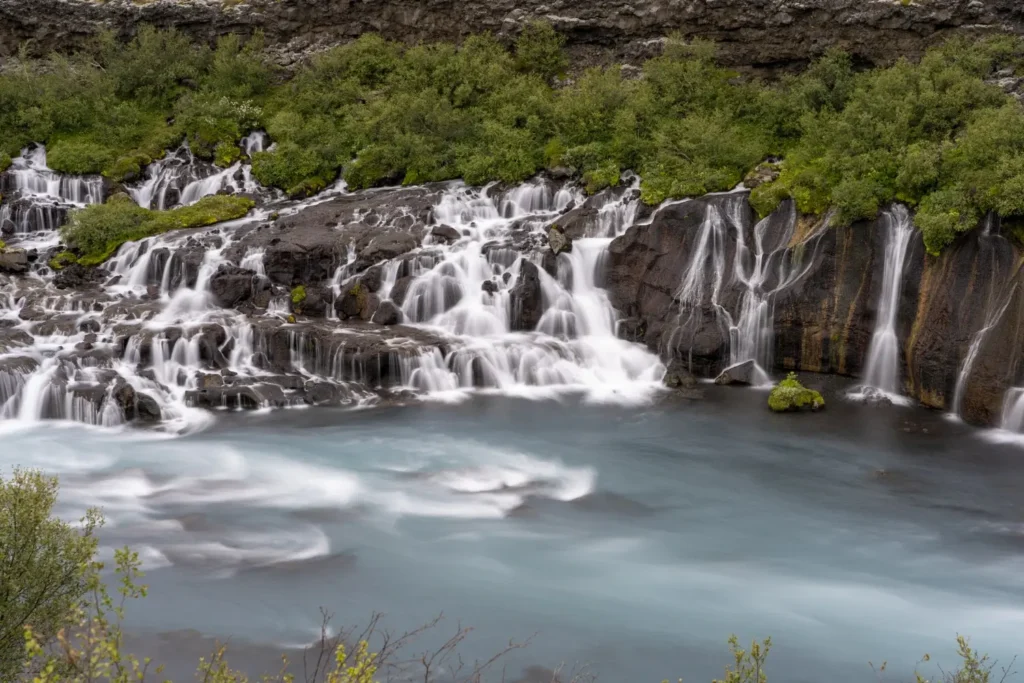
How Are Waterfalls Formed?
So, how are waterfalls formed? Here’s the short version: Waterfalls happen when rivers or streams flow over a sudden drop in the land like a cliff, ridge, or rocky ledge and gravity takes over.
Now, if you’ve ever watched a waterfall closely, you’ll notice how the water doesn’t just fall it carves. Over time, that flowing water chips away at softer rock layers beneath harder ones. This slow erosion shapes the land, deepens the fall, and sometimes even shifts the waterfall upstream. It’s like nature’s way of sculpting with water.
Rivers are the real artists here. As they move across different types of rock, they wear away the softer bits faster. The harder rock on top sticks around longer, forming a ledge. That’s the edge you see the water pouring over. Below, the water hits with force and forms a plunge pool a deep basin that keeps getting bigger as the waterfall continues to erode the land.
I remember learning this while standing near the edge of Glenoe Waterfall in Northern Ireland. The tour guide pointed out the layers of rock some crumbly, some solid and how the waterfall had slowly chewed its way through the hillside over thousands of years. It made me realize: every waterfall tells a story, written in stone and shaped by time.
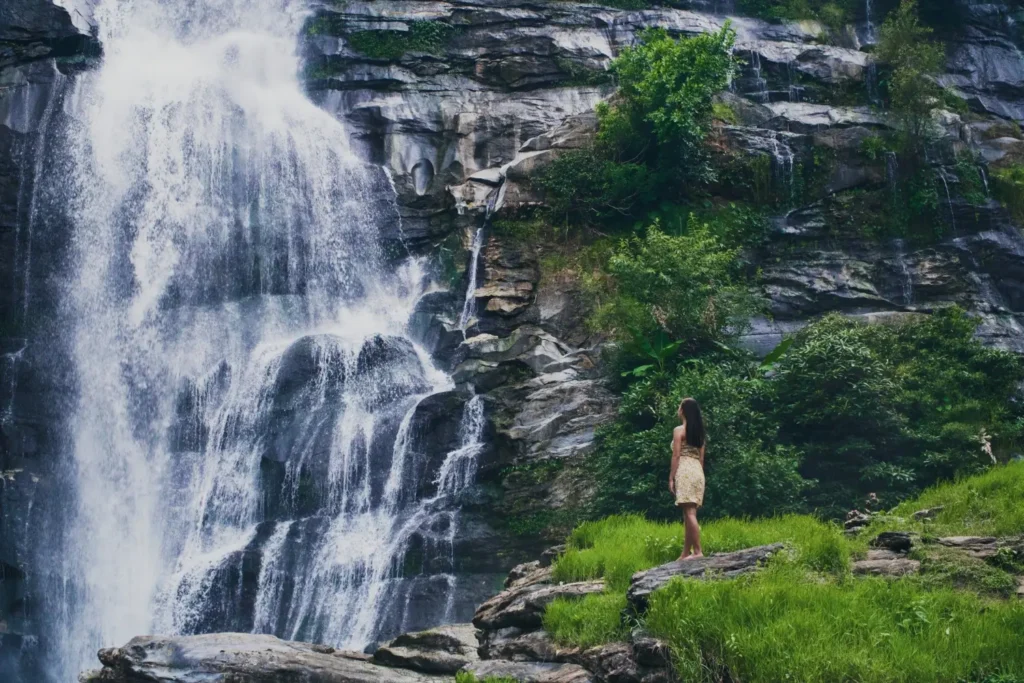
Real-Life Experiences from Ireland and the USA
Waterfalls in Ireland and the USA maintain year-round flow thanks to consistent rainfall, underground springs, and powerful river systems like the Great Lakes.
There’s something timeless about waterfalls no matter where in the world you see one, it somehow makes you feel small in the best way. I’ve had the chance to stand beside some pretty incredible ones, from the gentle cascades of Ireland to the roaring power of Niagara Falls in the USA. Each place tells its own story, shaped by landscape, weather, and even legend.
In Ireland, the waterfalls feel like they’re straight out of a fairy tale. For instance, Glencar Waterfall in County Leitrim is nestled in a mossy forest where everything is quiet and gentle. I remember the spray hitting my face as I stood on the footbridge, hearing nothing but the sound of falling water and birdsong. Powerscourt Waterfall, Ireland’s tallest, is more dramatic especially after heavy rain but still holds that peaceful, old-world charm. A local guide once told me Irish waterfalls often whisper more than they shout. It’s true. They don’t roar like Niagara they sing.
Now, compare that to Niagara Falls, and it’s a different world. I remember walking along the viewing deck with a poncho flapping in the wind, my voice drowned out by the thunder of water. Niagara doesn’t just fall it crashes, like nature hitting the volume button. Every second, more than 3,000 tons of water spill over the brink. It’s not just a waterfall it’s an experience. You feel it in your chest. What’s amazing is that despite this power, Niagara Falls runs constantly, all year long, thanks to the Great Lakes. That’s five freshwater lakes acting like a giant, natural faucet.
Local stories add even more depth. In Glencar, someone once told me the waterfall inspired W.B. Yeats’ poetry. In Niagara, I learned about daredevils who rode barrels over the falls some survived, some didn’t. Both places are steeped in culture, but in very different ways.
As for year-round water flow, it comes down to climate and natural storage. Ireland’s falls keep going thanks to frequent rain and upland streams. The Wicklow Mountains act like a sponge, slowly releasing water even during dry spells. Niagara stays strong because of the sheer size and flow of its source Lake Erie draining into Lake Ontario. No matter the season, both waterfalls remind you that water, when guided by nature, finds a way to keep moving.
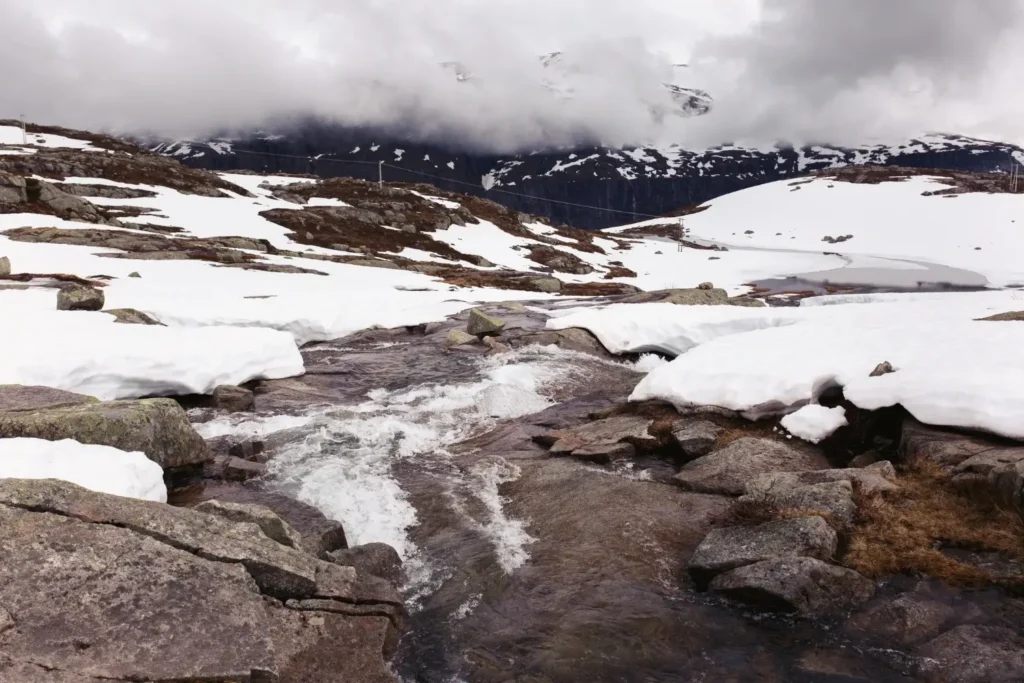
Do Waterfalls Ever Run Out or Freeze?
Do waterfalls run out of water? Surprisingly, yes at least some do. Not all waterfalls are created equal. Some have powerful rivers or lakes feeding them nonstop, like Niagara Falls. But smaller, seasonal ones? They can dry up, especially during long droughts or hot summers. I once hiked out to a little-known waterfall in County Clare during a dry spell only to find a bare cliff and a trickle of dust. Nature had hit pause.
Short answer: Waterfalls can run out of water during dry seasons or droughts, especially if they’re fed by small streams or rain-dependent sources.
But that’s not always a bad thing. Some of the most charming waterfalls are seasonal they appear like magic in spring or after heavy rain, and then fade away until next time. It’s like they visit, then disappear, keeping you guessing.
Do waterfalls freeze? Oh, absolutely. I’ll never forget seeing parts of Niagara Falls frozen solid in the heart of winter. Giant icicles hung like nature’s chandeliers, and mist turned into frosty clouds around us. It felt like stepping into a scene from Frozen minus the singing princess.
In Ireland, I’ve seen waterfalls in the Wicklow Mountains slow to a frozen crawl, turning their flow into shimmering ice ribbons. Even the sound changes less rush, more whisper.
Short answer: Yes, waterfalls can freeze in winter when temperatures drop low enough, especially in places with strong wind chill and steady flow.
Why it happens comes down to three things temperature, wind, and water flow. If it’s cold enough for long enough, and the flow isn’t too strong, ice builds up layer by layer. But if the water is moving fast like at Niagara it rarely freezes entirely. Just the edges dress up for winter.
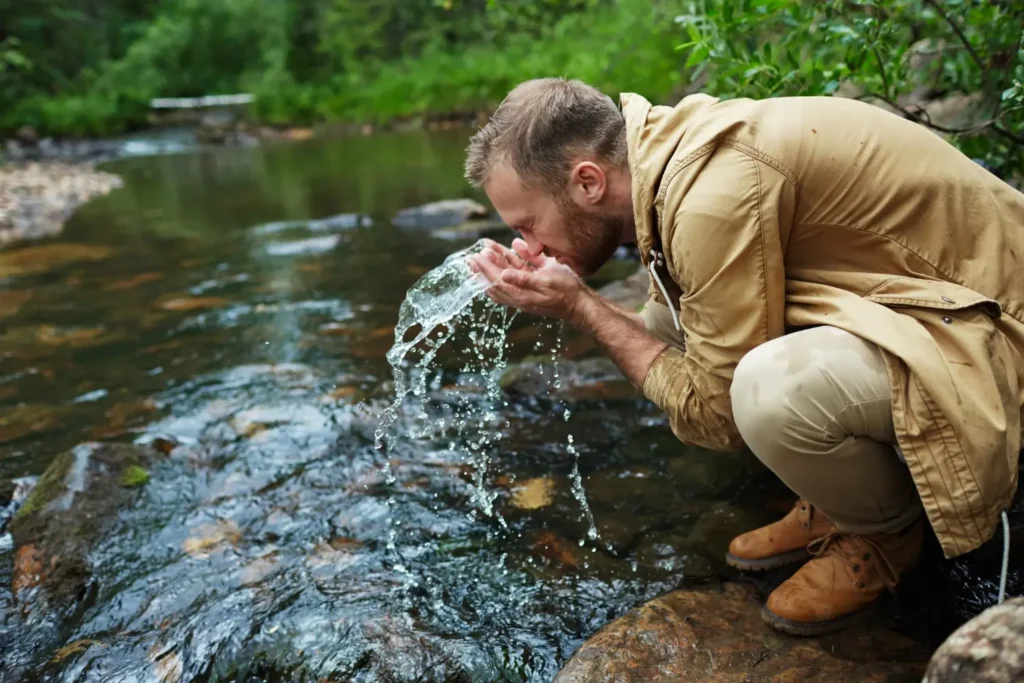
Can You Drink Waterfall Water?
Short answer: Sometimes, yes but only if you’re very sure it’s safe. Most of the time, it’s better not to risk it.
Now, I get it standing near a waterfall with clear, rushing water makes it look drinkable. It feels pure, straight from nature, untouched by human hands. I’ve been tempted too. One time, while hiking in the Wicklow Mountains, I dipped my bottle into a high-altitude stream near a small waterfall. It was icy cold, tasted like snowmelt, and honestly, it was the best water I’ve ever had. But I only drank it because our guide assured us it came straight from a glacial spring with no human or animal activity upstream. That made all the difference.
Is it okay to drink waterfall water? Only if you know exactly where it’s coming from. Even the clearest-looking water can carry invisible threats like bacteria, parasites, or animal waste. Giardia, for example, is a sneaky little bug that can turn your scenic day hike into a week of regret. And trust me, no view is worth that.
Here’s a rule of thumb: remote, high-altitude waterfalls with glacial or spring-fed sources are sometimes safe especially if you filter or boil the water first. On the other hand, waterfalls in lower areas, near trails, farms, or roads? Better admire them with your eyes, not your bottle.
I once asked a local ranger in Yosemite about this. He told me flat-out: “Unless you see it bubbling out of the earth and you’re the first one there filter it or forget it.” Wise words, and I’ve stuck with them ever since.
So, while the idea of sipping from a waterfall sounds like something out of a nature documentary, real life isn’t always that clean. Bring a filter. Or just pack your water. Your stomach will thank you.
Quick Tip for Hikers
Want that fresh, wild-water experience? Carry a lightweight filter or purification tablets. That way, you can still enjoy that crisp waterfall taste without the gut-wrenching consequences.
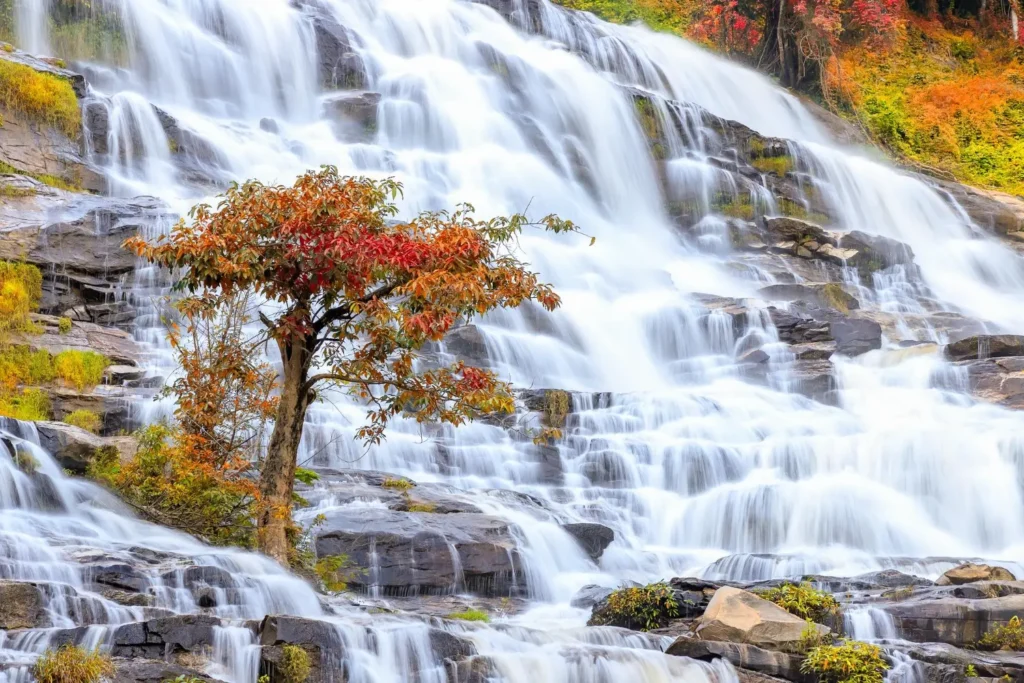
10 Fun Lines About Waterfalls
Looking for quick waterfall facts that make you smile and stick? Here are 10 fun, bite-sized lines about waterfalls perfect for featured snippets and great to share. I’ve heard some of these on hikes, others I’ve felt while standing near the spray. Either way, they stick with you like the mist on your skin.
Waterfalls are shaped by rock, rain, and time.
Each drop has a narrative to tell that has been crafted over thousands of years.
A waterfall is nature’s shower of power.
Just stand near one you’ll feel the rumble in your chest.
Waterfalls form where rivers drop over cliffs.
It’s the Earth hitting the “slide” button on water.
Rain and snow feed mountain waterfalls.
Yep, clouds are the real MVPs behind those epic views.
Water flows from high ground to low thanks, gravity!
It’s nature’s most reliable downhill delivery system.
Some waterfalls freeze into icy sculptures.
I once saw one that looked like a frozen chandelier pure magic.
Most waterfalls don’t run dry they recycle water.
Rain in, river out. The cycle keeps the magic flowing.
Plunge pools form where water crashes below.
It’s like nature carved out a jacuzzi minus the bubbles.
Ireland has gentle, scenic falls like Glenoe Waterfall.
Soft, misty, and mossy like walking into a daydream.
They can fill a million bathtubs in a matter of minutes.
Standing there, I thought: “That’s a lot of laundry water.”
Conclusion
If you’re someone who loves nature’s raw beauty and is curious about how things work behind the scenes, learning about waterfall sources will absolutely fascinate you. But if you’re looking for a deep dive into geological science, this might just scratch the surface. From my own hikes and travels, I’ve found that most waterfalls are fueled by rain, melting snow, or rivers flowing from higher ground it’s nature’s way of recycling water, with a dramatic twist. Just imagine all that power starting from a simple mountain stream. So next time you see a waterfall, you’ll know it’s more than just pretty; it’s part of an epic journey.
Frequently Asked Questions
Where does water from a river come from?
Most river water starts as rain or melted snow. As it descends, it enters streams, which eventually converge to become rivers. Learn more about how rivers shape the land.
Where is the water coming from in a waterfall?
Typically, a river or stream provides the water for a waterfall. It creates that stunning descent by flowing over a cliff or steep slope. Curious where famous waterfalls get their flow? Keep reading!
How does water get up to a waterfall?
Water doesn’t actually climb up it starts high up in the mountains or hills. Rain and melting snow collect there, then flow down until they reach a drop. That’s when a waterfall happens. Want to explore how landscapes affect waterfalls? Learn more.
What is a plunge pool in a waterfall?
The deep area at the base of a waterfall is called a plunge pool. A hole is carved out in the rock by the forceful impact of the falling water. Over time, it gets deeper and wider. Discover how plunge pools help shape waterfalls!
Can a waterfall be man-made?
Yes! People can build waterfalls in gardens, parks, or even inside buildings. These man-made waterfalls copy nature but are built with pumps and pipes. Want ideas for a backyard waterfall? Find out more.
What’s the tallest waterfall in the world? (Angel Falls)
The tallest is the Angel Falls in Venezuela. The water drops about 3,200 feet from a cliff! Some of the water turns to mist before it reaches the ground because it is so tall. Learn more fun facts about Angel Falls.
How fast does water flow over Niagara Falls?
Approximately 85,000 cubic feet of water surge over Niagara Falls per second! That’s enough to fill over a million bathtubs every minute. Ever wonder how all that water is managed? Dive deeper into Niagara’s power.
How are Irish waterfalls different from American ones?
Irish waterfalls are often smaller and tucked into green, mossy hills. American waterfalls can be huge and found in vast national parks. Each has its charm curious which ones to visit? Discover more hidden gems.



